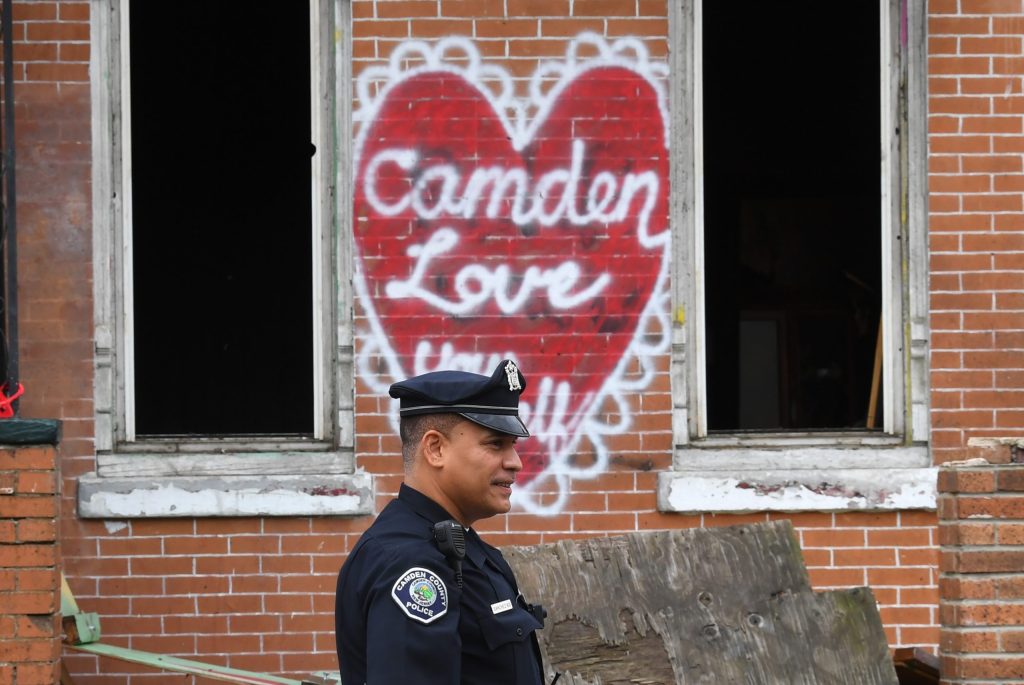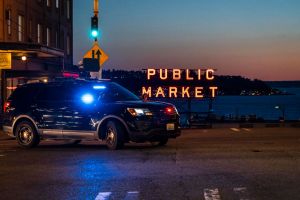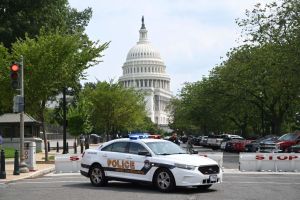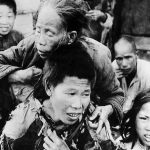The left is demanding ‘defund the police’ in the wake of George Floyd’s killing. President Trump’s allies are hunkering down with calls for ‘law and order.’
Both miss the plot.
When pressed, the left really wants a new Great Society. Black Lives Matter co-founder Alicia Garza told NBC’s Meet the Press that ‘defunding police’ is really about ‘increased funding for quality of life of communities who are over-policed and over-surveiled.’ But the Great Society didn’t work, and a new one would also be ill-fated.
For its part, the right fails to acknowledge real problems with our criminal justice system. President Trump addressed some of them in a much-praised federal sentencing reform bill last year. But Republicans — who often curry favor with police unions — almost never challenge the contracts they impose that allow cover-ups and inaction on charges of police misconduct.
Take Minneapolis. Out of 2,600 civilian complaints filed against cops since 2012, only a dozen resulted in any discipline.
The harshest penalty was a one-week suspension.
There is a Third Way the two ideologies could agree on — if they want real change.
That new path can be glimpsed in Camden, New Jersey, a poverty-stricken city of 74,000, across the river from Philadelphia. But while the City of Brotherly Love was hit by riots and looting after the Floyd killing, Camden was quiet. Police chief Joe Wysocki joined the local protest and mixed with activists, clergy and residents.
As a child, I lived in a suburb not far from Camden. It was then known as the nation’s poorest and most dangerous city.
Things weren’t any better in 2012, when the homicide rate was five times that of neighboring Philadelphia and 18 times that of New York City. The city featured 175 open-air drug markets. ‘Criminals operated with impunity,’ former police chief Scott Thomson recalls.
The police force was beyond fixing. Reason magazine reported:
‘It took Camden cops one hour on average to respond to 911 calls, or more than six times the national average. They didn’t show up for work 30 per cent of the time, and an inordinate number of Camden police were working desk jobs. A union contract required the city to entice officers with extra pay to get them to accept crime-fighting shifts outside regular business hours.’
Officers routinely planted evidence, fabricated reports and ignored complaints.
GOP governor Chris Christie teamed up with Jose Cordero, a police reform expert who had helped cut crime in the troubled city of East Orange. Chief Thomson said they began ‘hitting the reset button.’ On May 1, 2013, Camden laid off its entire force, tearing up the old union contract. The county took over, rehired the best officers and added 100 new ones with the savings from reductions in bloated benefits.
Soon the new force was almost double the size of the old one and had new technology that could effectively monitor dangerous neighborhoods. A demolition campaign razed abandoned buildings that had been taken over by drug dealers.
Chief Thomson forced cops out from behind their desks and onto foot patrols. Civil service rules were suspended so talented junior officers could be promoted. The test for screening new recruits was replaced with a new one geared toward identifying people who could relate to residents. The new officers were then sent door-to-door to introduce themselves and build trust.
Training changed. Police were trained to de-escalate situations, made to wear body cameras and told that any officer who violated civil rights would be fired. Excessive force complaints in Camden have dropped 95 percent since 2014. There were 25 homicides in Camden last year, down from 67 in 2012. Other crime is also way down.
Camden’s reforms still have critics. As the Philadelphia Inquirer noted this week:
‘Though many residents now agree the department has reduced crime and improved relationships with the community, mistrust lingers, and despite efforts to diversify, the force remains whiter than the largely nonwhite city it serves.’
But the changes — which eventually allowed the new force to unionize — brought the then President Obama to Camden in 2015 to praise its approach.
[special_offer]
When I visited Camden last year, I saw a city that was still poor and struggling. But the city was much cleaner than I remembered and there was no palpable sense of fear. I also learned progress had only come because things had gotten so bad the state was able to force change on the city.
We know a lot about how to make policing better. In 2015, a Pew Research Center poll taken after police brutality riots in Baltimore found 65 percent of blacks attributed much of the violence to poor relationships between the black community and local police. And 56 percent of whites agreed.
But getting cities to follow Camden’s example won’t be easy. ‘Given the vote blocs and money the unions wield, elected officials are loathed to challenge them in any meaningful way,’ says Stephen J.K. Walters, the chief economist at a Maryland think tank, who has studied Camden. ‘Until and unless they do so, the ongoing demonstrations for greater racial justice may lead to mostly symbolic change — as they have too often in the past.’


















